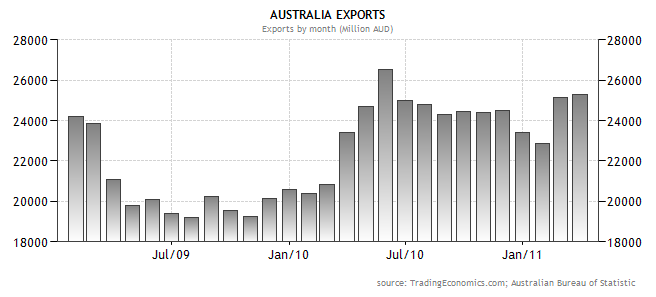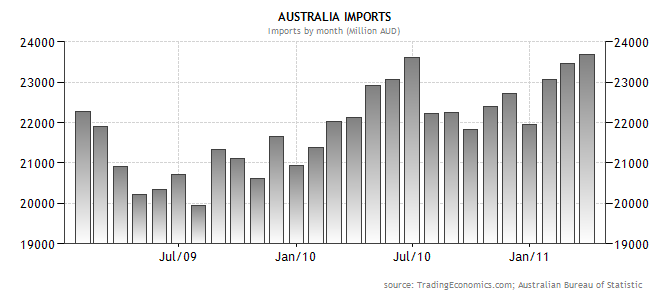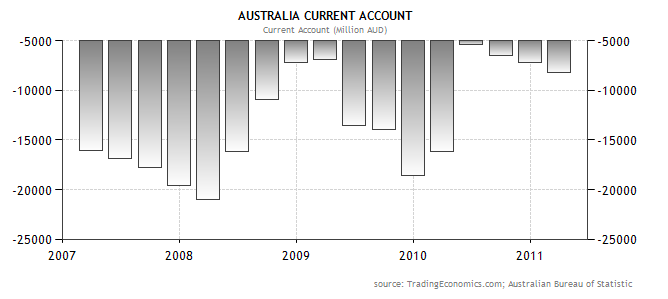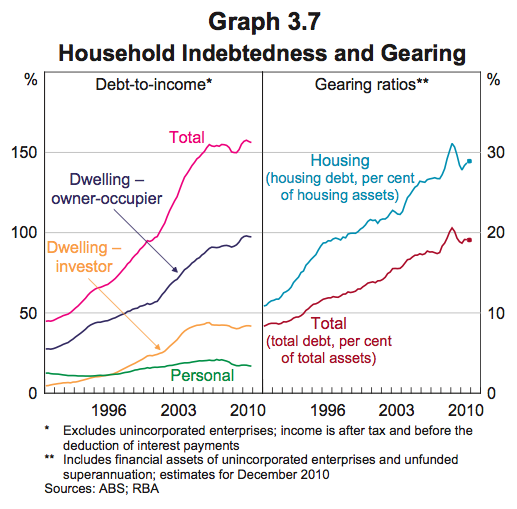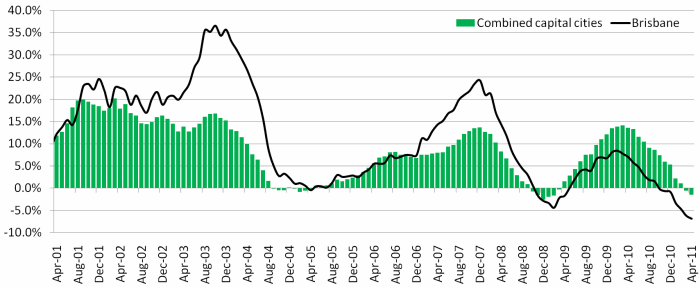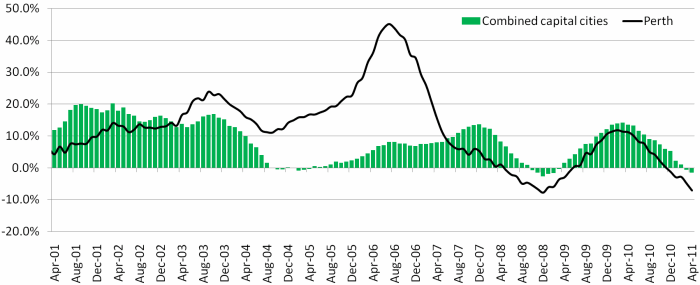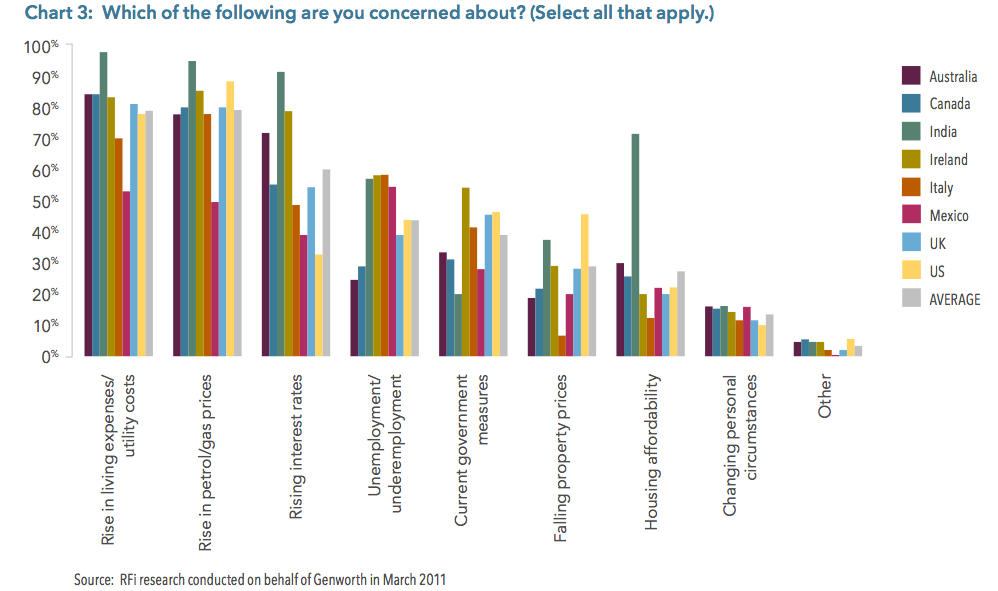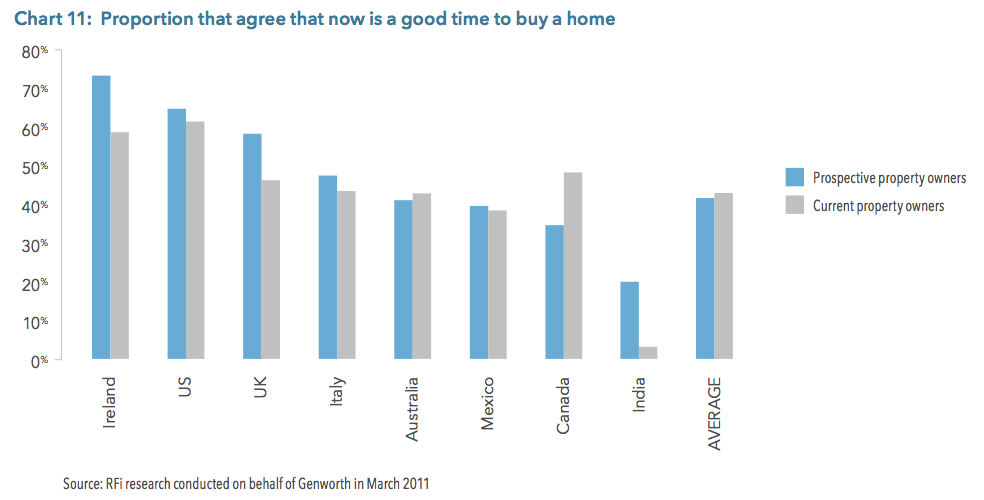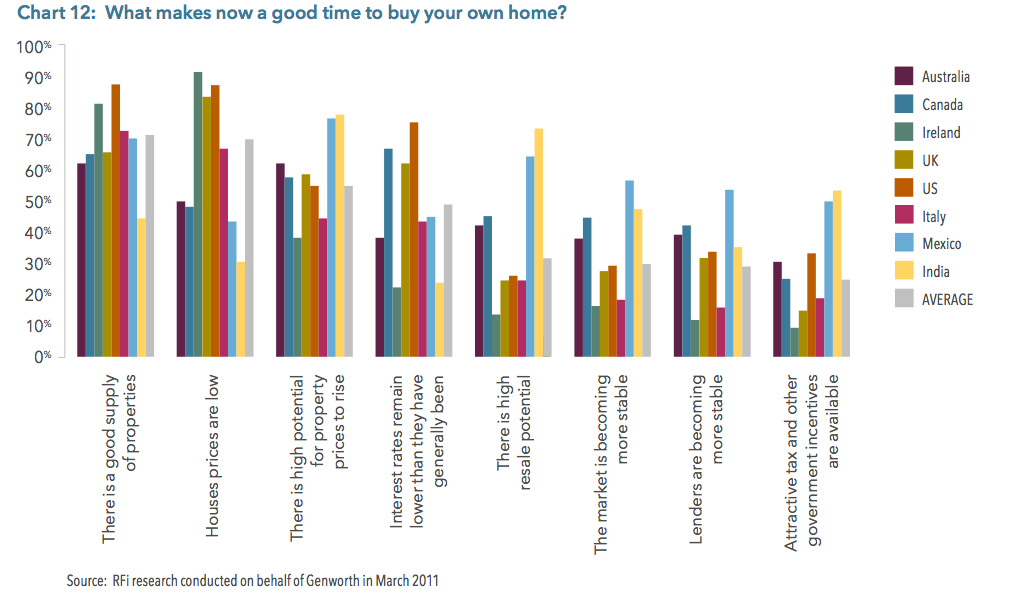Another weekend, another whirling of things around my thunktank. I am pretty busy this weekend so here’s a few short thoughts.
FutureBoom! economics
One of the things we talk a lot about at MacroBusiness, which tends to spark many “interesting” discussions, is the effect of the mining boom on the economy. I can’t really add to the discussion about mining in any meaningful way as I know very little about it, apart from the fact they have cool trucks. However I have noticed what is missing from many of the posts about Futureboom! is a discussion of the macroeconomic dynamics at a functional level. Given I don’t have much time for this post I though I would just present a few charts with some initial discussion and then revisit this topic later in the week.
As most would be aware the large increase in mining exports and its associated price increases has created a strong demand for the Australian currency because it is required by foreigners to purchase the exported goods. This in turn has also led to a level of currency speculation which has also increased the demand and therefore value of the currency.
The high AUD had a two fold effect on the rest of the economy, firstly exports in foreign currencies have become more expensive, which has meant that other exporters have become less competitive compared to foreign competition. Secondly imports have become less expensive in comparison to local providers of the same goods so they have also increased. So while mining companies are receiving increasing revenues many other parts of the economy are receiving less. What you will notice however is that if the value of exports is rising faster than that of exports then the nation as a whole will becoming richer. Taking a look at Australia’s imports and exports you would expect this to be the case.
There was a positive $2 billion difference between exports and imports in April. So you would therefore expect that the nation as a whole should be getting richer even if some sectors were suffering from the consequences of the adjustment, that is certainly the government’s line. However if you take a look at Australia’s current account you will notice something quite odd that I think most people have missed. Australia is not getting richer as a whole. In fact, in March, Australia net borrowed $8 billion dollars from the rest of the world. Australia has actually been running a current account deficit for decades, and even with historically high terms of trade continues to become further indebted.
There are various reasons for this deficit which I will examine in a future post. But I will leave you with a few worlds from Martin Wolf why running current account deficits are a problem.
Why is running current account deficits so dangerous? There are four reasons: first, it often means unsustainable asset price bubbles in the capital-importing country; second, it means unsustainable build-ups of debt in the private and public sectors of the capital-importing economy; third, it often means an unsustainable expansion of the financial system, characterized by excessive leverage and excessive build-ups of risky assets financed by supposedly risk-free liabilities; finally, it also often means a build-up of currency mismatches within the economy, particularly in the financial system, which makes the economy extremely vulnerable to currency collapses.
Any of that sound familiar ?
Genworth bullishness
The latest Genworth report on mortgage trends is out and worth a read. I note it has had a little bit of a run in the MSM. I think that 1000 people is probably too small a sample to get a real assessment, but even so the results are pretty surprising in my opinion.
According to the latest RBA financial stability review the level of household debt-to-income in Australia is near an all time high.
A quick glance at markets will tell you that there is a solid deflationary trend setting in, with Perth and Brisbane showing the worst of it.
And as noted by Bullion Barron yesterday, the number of properties on the market and for rent (something I have also mentioned previously) continues to climb as the churn rate falls. But according to what I can see in the Glenworth report, this all seems like quite positive news to the average Australian. They seem quite unconcerned about falling house prices.
Nearly 50% believing it is a good time to buy:
And 60% still believe there is high potential for property price rises:
Now it would be fairly obvious to my readers that I would have answered all of those questions very differently, and I have to add that I think it is unlikely that the RBA would ever let that sort of exuberance off-the-leash even if it could occur in the face of the demographic effects that will hit the market over the next 10 years. Accepting that the survey is representative, we can take the bullishness of the report in one of two ways. First, it could be indicative of late-stage bubble-psychology and suggest that housing will have to much further to fall before sense returns to the Australian community about housing. Second, it might also be indicative of a large cohort of Australians that remain ready to risk their savings on housing investment, which might be interpreted as bullish.
I’ll take both.

